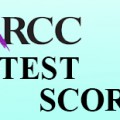 I had the opportunity to manage a pilot or test run of the Smarter Balanced Assessment in 2013. At the time, the high school I work at was not equipped to test an entire grade, for example, the 9th-grade class. We didn’t have a computer for every student. We had one available computer lab that sat 35 students. I selected two Honors Biology classes, some of our brightest freshmen, as subjects.
Fortunately, it didn’t take much to motivate these students to be guinea pigs, so to speak, for a “new way of testing,” as I called it. I sold the idea as best as possible, telling the students that the exam would be entirely on a computer. Kids like computers, right? They were so used to the CA Standards Tests, a booklet and answer document format. I told the students that the test questions would be based on the eighth grade science. Smiles and brief chatter ensued from them. I knew these students had aced their 8th-grade science class. Otherwise, they wouldn’t have been recommended for honors Bio. The last item I mentioned to these over-achievers was that the test was “adaptive,” explaining that it got harder the more they answered correctly. “Cool!” a male student yelled out.
When the time came, the students were escorted to the computer lab. The first batch consisted of 37 students. I had arranged for our IT person, or “Tech Guy”, to set-up two laptops on a table that was in the middle of the lab. One key point about the test: there is no software to pre-load from a disk.; the access comes directly from a server somewhere. However, our Tech guy still had to place the icon that would launch the test on the desktop of every single computer. I’m sure this took him considerable time. In addition, at the time, our school’s bandwidth was in the process of being improved. I expected there to be some screens crashing. In effect, a few screens froze in mid-stride, and students had to launch the test all again. Headphones were also required for every student. Students could opt to listen or not to the instructions. Most chose to completely plug-in. The teacher is at the helm of these computer exams. Their computer is designated as the master. They can see the progress, and results almost instantly. Now onto the feedback from students…
I had the opportunity to manage a pilot or test run of the Smarter Balanced Assessment in 2013. At the time, the high school I work at was not equipped to test an entire grade, for example, the 9th-grade class. We didn’t have a computer for every student. We had one available computer lab that sat 35 students. I selected two Honors Biology classes, some of our brightest freshmen, as subjects.
Fortunately, it didn’t take much to motivate these students to be guinea pigs, so to speak, for a “new way of testing,” as I called it. I sold the idea as best as possible, telling the students that the exam would be entirely on a computer. Kids like computers, right? They were so used to the CA Standards Tests, a booklet and answer document format. I told the students that the test questions would be based on the eighth grade science. Smiles and brief chatter ensued from them. I knew these students had aced their 8th-grade science class. Otherwise, they wouldn’t have been recommended for honors Bio. The last item I mentioned to these over-achievers was that the test was “adaptive,” explaining that it got harder the more they answered correctly. “Cool!” a male student yelled out.
When the time came, the students were escorted to the computer lab. The first batch consisted of 37 students. I had arranged for our IT person, or “Tech Guy”, to set-up two laptops on a table that was in the middle of the lab. One key point about the test: there is no software to pre-load from a disk.; the access comes directly from a server somewhere. However, our Tech guy still had to place the icon that would launch the test on the desktop of every single computer. I’m sure this took him considerable time. In addition, at the time, our school’s bandwidth was in the process of being improved. I expected there to be some screens crashing. In effect, a few screens froze in mid-stride, and students had to launch the test all again. Headphones were also required for every student. Students could opt to listen or not to the instructions. Most chose to completely plug-in. The teacher is at the helm of these computer exams. Their computer is designated as the master. They can see the progress, and results almost instantly. Now onto the feedback from students…
 They liked the interactive modules. They could click and move images. They liked being able to highlight, make notes, and the other features of the test, like being able to go back, and check responses prior to hitting the submit button. The only negative feedback I received was from students whose computer screen and test stalled. They didn’t complain about the difficulty. The majority responded like typical teenagers, nonchalantly. Teenagers aren’t very verbose when talking to adults, becoming extra mute when talking to their school administrators. This lack of communication is often carried over to the home environment. By the end of middle school, parents and guardians have come to expect a brief synopsis from their teen if that, about the day at school. During annual state testing, some teens may be too tired to say much at all when they get home, leaving the anxious, and curious parent feeling exasperated, devoid of a full conversation. The following information will help parents put the Smarter Balanced Assessment exams into perspective. Consider any other bit of information you may glean from your teen a plus!
They liked the interactive modules. They could click and move images. They liked being able to highlight, make notes, and the other features of the test, like being able to go back, and check responses prior to hitting the submit button. The only negative feedback I received was from students whose computer screen and test stalled. They didn’t complain about the difficulty. The majority responded like typical teenagers, nonchalantly. Teenagers aren’t very verbose when talking to adults, becoming extra mute when talking to their school administrators. This lack of communication is often carried over to the home environment. By the end of middle school, parents and guardians have come to expect a brief synopsis from their teen if that, about the day at school. During annual state testing, some teens may be too tired to say much at all when they get home, leaving the anxious, and curious parent feeling exasperated, devoid of a full conversation. The following information will help parents put the Smarter Balanced Assessment exams into perspective. Consider any other bit of information you may glean from your teen a plus!
Parents, don’t expect a full implementation, especially year one’s later this semester, to come up all roses. First, here’s what you need to know:
1) Only Math and English Language Arts/Literacy are ready and approved test subject areas.
2) The tests will be administered to students in grades 3-8, and 11.
3) The tests are what are known as, “Summative Assessments,” meaning they are supposed to assess what students have (or were supposed to have) learned all year.
4) These summative assessments are administered as part of the CA Assessment of Student Performance and Progress (CAASPP) System, in case you receive mail from your child’s school with this acronym as the header.
5) Test question items assess the highly controversial, Common Core Standards. These are semi-national (a few states have not adopted the CCSs) learning standards, meaning students across the nation will finally be able to be compared to one another.
Here’s what you can expect: The tests are not easy. They are quite intense. I know because I have tried taking sample ones. Poor readers and mathematicians will obviously struggle with the content. So will average students since the questions are nothing they have truly ever seen. Sure, teachers have been teaching elements of the Common Core Standards, but since there is no accompanying standardized curriculum, most of them have been shooting blindly at a target. The whiz kids will fare the best, as usual. The first time will be the hardest. Students will need to get used to the new computer format. Schools/School districts have been buying small laptops like Chromebooks as if they’re going out of style. Most schools will assign a Chromebook to a student for the test or if available, a desktop unit. Note: iPads can handle the job as well, and some schools may elect to employ these. (I wouldn’t want my child using an iPad for this purpose). Lastly, if your child is not computer savvy, good luck! The various selections on the screen could make the test additionally difficult for students not comfortable with computers. Expect problems. Schools across California have leveled-up their technology in anticipation of the CAASPP, but that doesn’t mean there won’t be glitches. Expect conflicting emotions. Your neighbor may be excited for their student. You, on the other hand, may be concerned. One student may be anxious, another one nervous, one completely calm and collected, etc. For more information about the CA Smarter Balanced Assessment System, please go to www.cde.ca.gov







Pingback: Single Parent Success Guide | 7Wins.eu